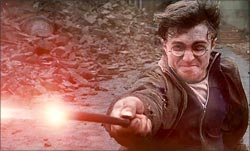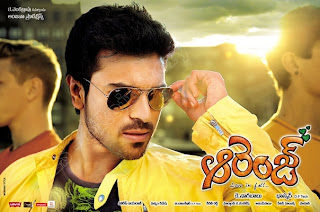Having raced to the bottom in their voice tariffs and saddled with low average revenue per user, Indian carriers are seeing hope with the launch of 3G services.
While MTNL and BSNL had a lead of almost two years they have failed to make the cut because of their lack of understanding of the desired device and content ecosystem.
Tata DOCOMO, Aircel, Reliance Communications and Airtel have launched their 3G services and it's expected they will heavily rely on smartphones, application stores and multimedia content to evince interest from the consumer.
As already proved in western economies consumption of data has been the single biggest factor for change in the fortune of carriers.
As we start to talk about what this means and where this will lead to let's take a look what 3G means and how it will change the way you consume telecommunication services and products in India in the years to come.
3G networks are more efficient than 2G networks because of the wider frequency band that they operate in. This means higher bandwidth content such as music and video can be effortlessly streamed over the network. There are many competing technologies within 3G, however the most preferred across the globe is High Speed Packet Access (HSPA).
Airtel and Aircel have chosen HSPA while Tata DOCOMO and RCOM have selected an even more efficient version HSPA+ (Evolved HSPA) that promises even greater network speeds.
HSPA+ is the same technology that T-mobile is rolling out as 4G in the US.
HSPA gives a download speed of 14 Mbps (mega bytes per second) and an upload speed of 5.8 Mbps.
HSPA+ gives a download speed of 56 Mbps and an upload speed of 22 Mbps and supports Internet Protocol (IP) architecture. In contrast 2G working on GSM/EDGE technology gives a measly data speed of 56 to 360 Kbps.
So for a country that loves to talk what difference does high speed Internet make?
It does and that is where the whole ecosystem, demographics and the content ecosystem dovetail perfectly.
A simple but startling comparison is a good place to start: In a population of 1.2 billion there are just around 40 million PCs neatly overshadowed by 600 million mobile phones.
In India where the fixed line network is scarce and inefficient 3G technology marks a huge connectivity leap and should be hailed as an enabling technology in bringing Internet connectivity to all.
This means that a phone can be used to watch live TV, used as a virtual phone using a Voice Over Internet Protocol (VOIP) service, do video-conferencing using Skype, use Facebook, Orkut or Twitter, listen to live music from Internet radio or a music service like Spotify, share photos, use as a tether to download books and play games.
This shift is also expected to give a boost to the fortunes of the application developer community in India, not a big one at the moment and more used to working on pre-historic Symbian platform that has been chugging along because of Ovi music.
The mobile app development market is a huge opportunity and if valuations of certain companies like Foursquare and Rovio are anything to go by it has the potential to create a new industry in India.
Few of the companies like Hungama Mobile, OnMobile and IMIMobile are moving out of their VAS legacy to embrace this new reality. Various indicators such as strong mobile advertising numbers from Inmobi, mobile marketing, huge VAS content consumption and several mobile banking and payment ventures are encouraging enough to indicate a latent mobile commerce appetite.
Other than the crucial infrastructure upgrade, carriers have been busy lining up content, smartphones, data plans along with a strong marketing exercise to educate customers. Here is a lowdown on the essential components in this ecosystem.
App Stores
These are virtual stores through which consumers can download software applications for their mobile phones. Software applications could be anything from gaming, document manager to a train timetable application.
Some of the applications are free and supported through advertising; others carry a monthly subscription fee while few of them carry a one-time download fee.
Typically carriers have their own app stores however the experience from other markets tells that carriers do not provide a great experience.
Tata's is called 3G Life services, Aircel is busy promoting its Pocket Apps, Bharti has come out with App Central and RCom has been working behind the scenes with GetJar to launch its app store.
The biggest winners will be Samsung, Nokia and Apple who have an established App store and provide a quality that cannot be matched by carriers.
However, there is a strong market for regional content and none of these providers has anything to vet that appetite.
Smartphones
Phones that support 2100 MHz frequency will work on 3G. Most of the smartpones built in the last two years should support 3G. However there are a few that support only GSM/EDGE frequencies.
So what are smartphones?
If you have in hand a phone with the processing power of a computer it's called a smartphone.
HTC Desire, Samsung Galaxy, iPhone 4 are few of the smartphones that boast of 1 GHz processing power along with a smart UI, HD playback and some cool features such as accelerometer, digital compass and GPS.
Nokia N8 launched recently lags behind in its processing power and the UI.
Naturally these phones also excite developers to develop applications that fully utilise the device capability otherwise risking disengagement with the consumer.
This is the reason why device manufacturers and carriers are finicky about quality of mobile applications in order to maintain a higher quality of engagement with their consumers.
Advertising and marketing
Monetisation of content is the key to rewarding all participants in the ecosystem. Similar to Internet advertising, as mobile viewership will increase, brands and advertisers will start promoting themselves on mobile phones.
The ad revenue generated goes directly to the app developer with the carrier and ad network retaining a cut. This is a big opportunity as most of the users prefer a free application or content and advertising is a primary medium to incentivise the developer.
As shown in the developed markets mobile advertising has grown multi-fold in the last one year moving into sophisticated formats such as proximity advertising and instant promotions.
Data plans
After having done all the effort this is where the carrier expects a lift in its topline. At the moment most of the data plans have been tiered based on data consumption and future plans will evolve around usage patterns.
For example, if a user spends most of the time on Facebook than an unlimited Facebook plan can be purchased.
Similar plans would be available for Skype or heavy chat users.
With a surge in traffic these kinds of plans will help carriers optimise traffic and better utilise existing assets.
The possibilities are endless and we have just scratched the surface.













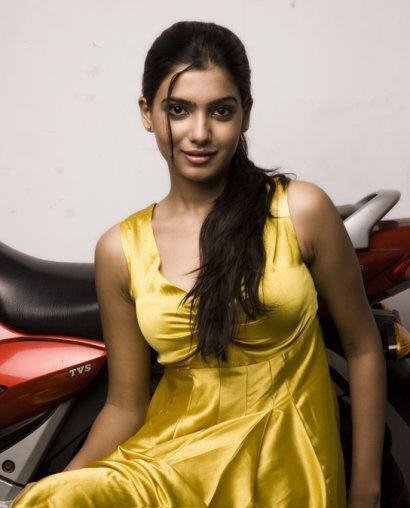
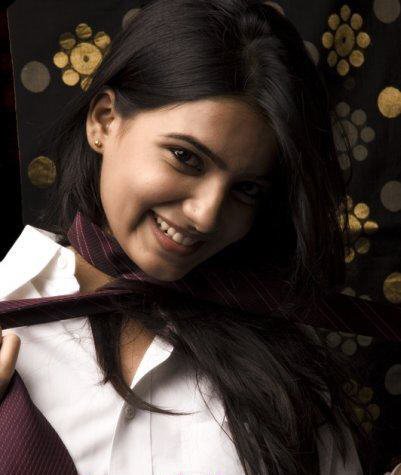


 Ram (Ram Charan Tej) is an youngster staying in Australia. He is an honest guy who doesn’t want to complicate life by lying to others. He has clear-cut ideas about love and he thinks that the intensity of love will not remain the same as the relationship progresses. He falls in love at first sight with Jaanu (Genelia) and impresses her over a period of time. However, he clarifies that he can’t love her forever when she proposes to him. The rest of the story is about all the hurdles he comes across due to his honesty and truth-telling nature and how he overcomes them.
Ram (Ram Charan Tej) is an youngster staying in Australia. He is an honest guy who doesn’t want to complicate life by lying to others. He has clear-cut ideas about love and he thinks that the intensity of love will not remain the same as the relationship progresses. He falls in love at first sight with Jaanu (Genelia) and impresses her over a period of time. However, he clarifies that he can’t love her forever when she proposes to him. The rest of the story is about all the hurdles he comes across due to his honesty and truth-telling nature and how he overcomes them. Ram Charan Tej: Ram Charan Tej should be appreciated for accepting such a honest subject with a thin story line for his third movie. It shows that Charan is not trying to stick to stardom and is not willing to repeat the mistakes performed by stars. The entire films runs on his characterization. He is brilliant in the break-up scenes and I loved his don’t-give-a-damn body language. His dances are full of energy and life.
Ram Charan Tej: Ram Charan Tej should be appreciated for accepting such a honest subject with a thin story line for his third movie. It shows that Charan is not trying to stick to stardom and is not willing to repeat the mistakes performed by stars. The entire films runs on his characterization. He is brilliant in the break-up scenes and I loved his don’t-give-a-damn body language. His dances are full of energy and life.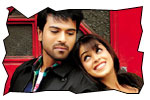 Others: Genelia’s characterization is just an extension to her Bommarillu character. However, the initial scenes involving her are not good. Hero character falls in love with heroine character in the movie because of freshness and innocence (which was there in Bommarillu character). However she didn’t carry such a freshness in this movie. Shahzahn Padamsee looks gorgeous with an endearing smile. Brahmanandam is entertaining in a full-length role of Puppy. Praneeth (Avakai Biryani fame) is very good and engaging as a friend of hero. His mixed the style of Siddharth and Sekhar Kammula in his dialogue delivery. Srinivas Avasarala (Ashta Chemma fame) is cool. Vennela Kishore doesn’t have much role to play. Prabhu is adequate in a role of negative shades. Naga Babu played a nice role and his character gives food for thought to hero. Gayatri Rao, Sanchitha Shetty and Kalpika are adequate.
Others: Genelia’s characterization is just an extension to her Bommarillu character. However, the initial scenes involving her are not good. Hero character falls in love with heroine character in the movie because of freshness and innocence (which was there in Bommarillu character). However she didn’t carry such a freshness in this movie. Shahzahn Padamsee looks gorgeous with an endearing smile. Brahmanandam is entertaining in a full-length role of Puppy. Praneeth (Avakai Biryani fame) is very good and engaging as a friend of hero. His mixed the style of Siddharth and Sekhar Kammula in his dialogue delivery. Srinivas Avasarala (Ashta Chemma fame) is cool. Vennela Kishore doesn’t have much role to play. Prabhu is adequate in a role of negative shades. Naga Babu played a nice role and his character gives food for thought to hero. Gayatri Rao, Sanchitha Shetty and Kalpika are adequate. Story - screenplay - direction: Bhaskar comes up with an unique and nice story that was never dealt on Telugu screen before. The basic point of love staling out over period of a time is an universal truth. Bhaskar explained the same with the ‘black and white’ characterization of Charan. Though he couldn’t get it right with his screenplay and back/forth narration in the first half, he explained the concept of the movie really well towards the climax with a gripping flashback and climax. Bhaskar who has done a beautiful film like Bommarillu with completely positive characters has infused negative shades in the heroine’s father characters in his subsequent films like Parugu and Orange. Having Prabhu’s character as negative one spoilt the mood/texture of the movie.
Story - screenplay - direction: Bhaskar comes up with an unique and nice story that was never dealt on Telugu screen before. The basic point of love staling out over period of a time is an universal truth. Bhaskar explained the same with the ‘black and white’ characterization of Charan. Though he couldn’t get it right with his screenplay and back/forth narration in the first half, he explained the concept of the movie really well towards the climax with a gripping flashback and climax. Bhaskar who has done a beautiful film like Bommarillu with completely positive characters has infused negative shades in the heroine’s father characters in his subsequent films like Parugu and Orange. Having Prabhu’s character as negative one spoilt the mood/texture of the movie. Other departments: Songs scored by Harris Jayaraj are peppy and energetic. Rooba Rooba song is my favorite. However the background scored for the movie didn’t help in elevating the situations. Dialogues (done by three writers) are partly okay. The philosophical dialogues explaining the concept of love are interesting in the second half. Cinematography and visuals are very good. Cinematography for the entire Mumbai episode is excellent. Marthand K Venkatesh opted for montage style editing (which is usually done for situational songs) for scenes in the first half and they appear jerky because the background score didn’t sync with the visuals. Production values by Anjana Productions are good, but the producer failed in controlling the budget as the money spent for this movie didn’t translate onto the screen (Naga Babu claimed in an interview that he spent 90% of what it cost to make Magadheera).
Other departments: Songs scored by Harris Jayaraj are peppy and energetic. Rooba Rooba song is my favorite. However the background scored for the movie didn’t help in elevating the situations. Dialogues (done by three writers) are partly okay. The philosophical dialogues explaining the concept of love are interesting in the second half. Cinematography and visuals are very good. Cinematography for the entire Mumbai episode is excellent. Marthand K Venkatesh opted for montage style editing (which is usually done for situational songs) for scenes in the first half and they appear jerky because the background score didn’t sync with the visuals. Production values by Anjana Productions are good, but the producer failed in controlling the budget as the money spent for this movie didn’t translate onto the screen (Naga Babu claimed in an interview that he spent 90% of what it cost to make Magadheera). Analysis: This movie starts off on a dull note. But it gets interesting as Charan’s characterization is introduced. First half of the movie is inconsistent with improper pacing. However, movie gets into the groove from the flashback episode and it becomes a conversational film till climax. Bhaskar has taken a beautiful concept as the basis for story and it needs extreme dexterity to narrate such a story to common moviegoer. Bhaskar succeeded in getting it right towards the climax of the movie. But the ultra-modern orientation and conversations-based treatment might put normal movie goer off the hook. The plus points are Ram Charan Tej, Songs and basic story idea. On the flip side, freshness from heroine and a better handling of the first half would have done wonders to the movie. As for as I am is concerned I am convinced with the second half of the movie and I liked it. On a whole, Orange is an honest film with a nice story idea despite inconsistencies and a few dull moments. You may watch it!
Analysis: This movie starts off on a dull note. But it gets interesting as Charan’s characterization is introduced. First half of the movie is inconsistent with improper pacing. However, movie gets into the groove from the flashback episode and it becomes a conversational film till climax. Bhaskar has taken a beautiful concept as the basis for story and it needs extreme dexterity to narrate such a story to common moviegoer. Bhaskar succeeded in getting it right towards the climax of the movie. But the ultra-modern orientation and conversations-based treatment might put normal movie goer off the hook. The plus points are Ram Charan Tej, Songs and basic story idea. On the flip side, freshness from heroine and a better handling of the first half would have done wonders to the movie. As for as I am is concerned I am convinced with the second half of the movie and I liked it. On a whole, Orange is an honest film with a nice story idea despite inconsistencies and a few dull moments. You may watch it! "ALLAH KE BANDAY pays homage to all the kids exposed to offense, misdeeds and crime," debutant director Faruk Kabir announced to me when he screened for me the first promo of his film. In times when senseless comedies, rom-coms and thrillers are being lapped up at the box-office, here comes a director telling a realistic story of a bunch of bad young men taking up guns when they are preordained to take up education, taking up abhorrence when they are meant to take up love. The consequences are drastic, with these kids turning into negative forces, taking up crime as their mission as grownups as well.
"ALLAH KE BANDAY pays homage to all the kids exposed to offense, misdeeds and crime," debutant director Faruk Kabir announced to me when he screened for me the first promo of his film. In times when senseless comedies, rom-coms and thrillers are being lapped up at the box-office, here comes a director telling a realistic story of a bunch of bad young men taking up guns when they are preordained to take up education, taking up abhorrence when they are meant to take up love. The consequences are drastic, with these kids turning into negative forces, taking up crime as their mission as grownups as well. ALLAH KE BANDAY is a film that spans the life of two twelve-year-old boys living in one of the most ruthless slums of Mumbai. From delivering drugs for the Mafia to looting people with their transvestite friend, the two aspire to assert their position in this world of crime. But when they are wrongly convicted for a murder and sent to the Juvenile Reformatory, they discover a world more chaotic and tough to survive in, than the one they left behind.
ALLAH KE BANDAY is a film that spans the life of two twelve-year-old boys living in one of the most ruthless slums of Mumbai. From delivering drugs for the Mafia to looting people with their transvestite friend, the two aspire to assert their position in this world of crime. But when they are wrongly convicted for a murder and sent to the Juvenile Reformatory, they discover a world more chaotic and tough to survive in, than the one they left behind. Does ALLAH KE BANDAY take inspiration from a foreign source? Is it inspired by the gangster flick CIDADE DE DEUS aka CITY OF GOD [2003], as being widely alleged? I would say that the source of inspiration seems more like SLEEPERS [1996], which starred some of the best names in the business [Kevin Bacon, Robert De Niro, Dustin Hoffman, Brad Pitt]. But despite the similarities, I must add that ALLAH KE BANDAY is not only well shot, but makes an equally powerful impact. Besides choosing an offbeat subject for his debut film, Faruk has gone a step further and shot it at real locations too and that, very frankly, takes the film to a different level altogether. The film wouldn't have worked had the director erected sets of a reformatory or the slums where crime breeds.
Does ALLAH KE BANDAY take inspiration from a foreign source? Is it inspired by the gangster flick CIDADE DE DEUS aka CITY OF GOD [2003], as being widely alleged? I would say that the source of inspiration seems more like SLEEPERS [1996], which starred some of the best names in the business [Kevin Bacon, Robert De Niro, Dustin Hoffman, Brad Pitt]. But despite the similarities, I must add that ALLAH KE BANDAY is not only well shot, but makes an equally powerful impact. Besides choosing an offbeat subject for his debut film, Faruk has gone a step further and shot it at real locations too and that, very frankly, takes the film to a different level altogether. The film wouldn't have worked had the director erected sets of a reformatory or the slums where crime breeds. Faruk Kabir makes a powerful impact as a storyteller. His handling of a difficult subject deserves brownie points. The sequences in the reformatory are very well shot. Ditto for the sequence when Sharman encounters Naseeruddin Shah, who is now reduced to a life worse than a beggar. There's not much scope for music in the film, but I'd like to single out the background score, which complements the goings-on well. The cinematography is eye-catching. The real locations have been deftly captured on celluloid. Dialogue are power-packed at times.
Faruk Kabir makes a powerful impact as a storyteller. His handling of a difficult subject deserves brownie points. The sequences in the reformatory are very well shot. Ditto for the sequence when Sharman encounters Naseeruddin Shah, who is now reduced to a life worse than a beggar. There's not much scope for music in the film, but I'd like to single out the background score, which complements the goings-on well. The cinematography is eye-catching. The real locations have been deftly captured on celluloid. Dialogue are power-packed at times.





